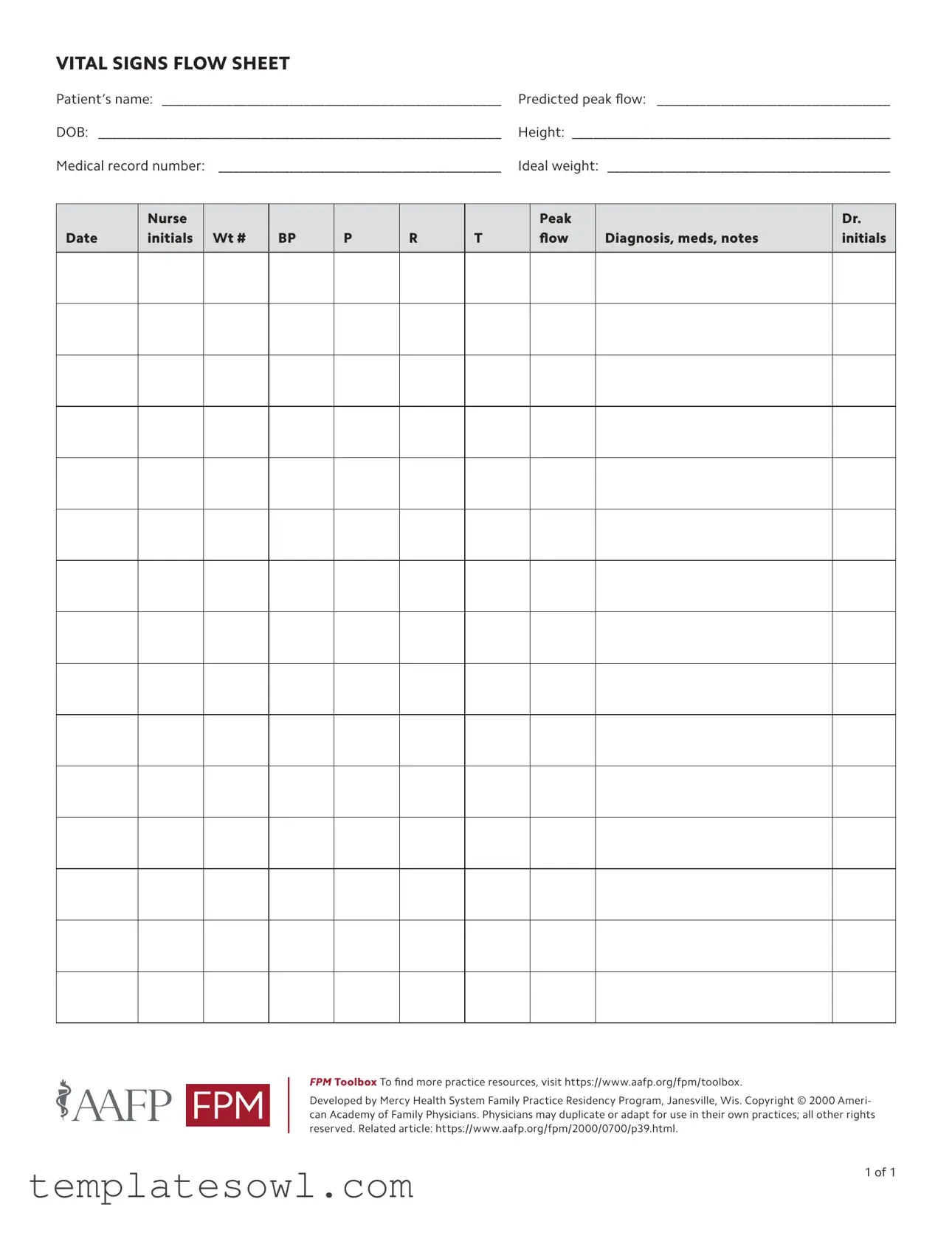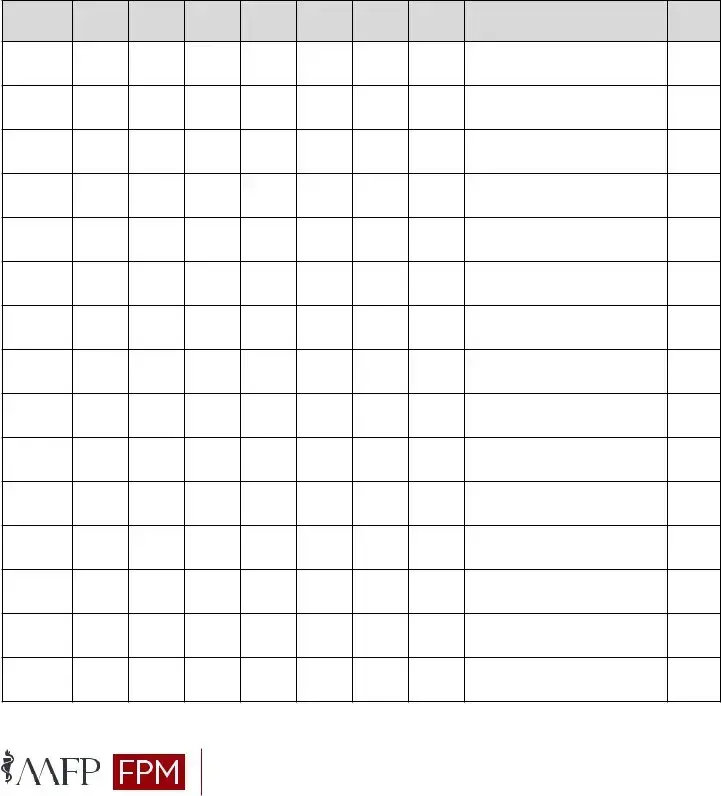1. What is a Vital Signs Flow Sheet?
A Vital Signs Flow Sheet is a structured document used by healthcare professionals to record and monitor a patient's vital signs over time. This includes important measurements such as weight, blood pressure, pulse, respiration rate, temperature, and peak flow. This tool aids in tracking a patient's health status and response to treatment.
2. How do you fill out the form correctly?
To fill out the Vital Signs Flow Sheet, start by entering the patient's name, date of birth, height, and medical record number at the top of the form. Each time vital signs are checked, record the values in the appropriate columns, along with the date and nurse's initials. The box for diagnosis, medications, and notes is for additional information relevant to the patient’s care, and you must ensure that a physician’s initials are included after entries are made.
3. Why is it important to monitor vital signs?
Monitoring vital signs is crucial because these measurements provide immediate insights into a patient's health. Changes in vital signs can indicate improvements or deteriorations in a patient's condition, allowing for timely interventions. Regular tracking helps healthcare providers make better-informed decisions regarding treatments and necessary follow-ups.
4. What does each column in the flow sheet represent?
Each column on the flow sheet represents different vital signs and related information. The 'Wt #' column stands for weight. 'BP' signifies blood pressure, while 'P' stands for pulse rate. 'R' denotes respiration rate, 'T' is temperature, and 'Peak flow' measures the maximum speed of expiration. The 'Diagnosis, meds, notes' column is for any relevant patient information or treatment plans, while the 'Dr. initials' column confirms a physician has reviewed the entries.
5. Can the Vital Signs Flow Sheet be reused?
Yes, the Vital Signs Flow Sheet can be duplicated or adapted for use in other practices by healthcare providers. However, specific rights are reserved, so it is crucial that only authorized personnel make copies or alterations to the form.
6. How often should the flow sheet be updated?
The flow sheet should be updated each time vital signs are taken. This could be during routine check-ups, hospital visits, or whenever a patient is assessed as part of their treatment plan. Consistent updates ensure an accurate history of the patient's health and treatment responses.
7. Where can I find additional resources related to the Vital Signs Flow Sheet?
Additional resources can be found in the FPM Toolbox on the American Academy of Family Physicians website. This site provides valuable practice resources that can assist healthcare professionals in better managing patient care and utilizing tools like the Vital Signs Flow Sheet effectively.
8. What happens if there is an error on the Vital Signs Flow Sheet?
If an error is identified on the flow sheet, it should be corrected immediately. Strikethrough the incorrect entry and write the correct information beside it. Initial the change to document accountability. This practice helps maintain the integrity of the patient’s medical records.
9. Is training required to use the Vital Signs Flow Sheet?
While formal training may not be mandatory, healthcare professionals should be familiar with how to accurately measure vital signs and complete the flow sheet. Understanding the form’s layout and purpose is essential for proper documentation and effective patient monitoring.
10. Can patients see their Vital Signs Flow Sheet?
Yes, patients have the right to access their medical records, including the Vital Signs Flow Sheet. Providing patients with their data fosters transparency in healthcare and encourages them to take an active role in their treatment and health management.

